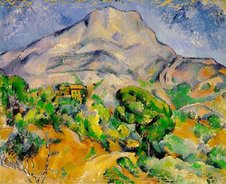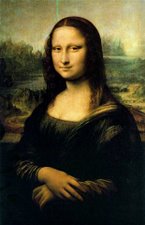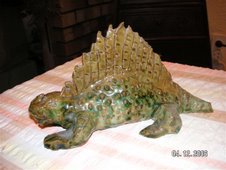For those who have not met this strange, and deeply thought- provoking mathematical phenomenon before, here's a brief thumbnail sketch, just for starters.
First, look at the rectangle above. Some find the proportions pleasing, compared with other rectangles that one might draw, having the same area, but different ratios of height and width. If you measure the lengths B and A in the diagram, and than calculate B/A and do so - very, very accurately- you obtain the following number: 1.6180339……………
(ed 9 Nov Ignore the blue A and B in the diagram (off the Internet): they just confuse the issue. )
First note that it's one of those so-called irrational numbers, like the more familiar pi, that have an infinite number of digits after the decimal point.
This number also has a symbol. It's looks like an "o" and "/ "superimposed, but is not accepted by the blogging software. But it's pronounced Phi.
Phi has a property like no other number. Enter it into a calculator, and then find its reciprocal, ie 1/1.6180339…… You will get, as an answer, 0.6180339 ……… Notice something ? : it's exactly the same as the digits after Phi's decimal point !
And if you then do the reverse, ie take the reciprocal (incidentally, called phi, with a small p) , then you get back to Phi once more.
As I say, no other number has this property, which gives a clue as to what is to come. Because that's just for starters. The closer one looks at Phi, the more mysterious it becomes. Indeed, mystical - some say .....
Here's a taster. Phi pops up in two entirely different situations. The first is geometry, with a bit of simple algebra for good measure.

Draw a line, then mark a dot roughly two thirds along as shown at the right. Then marks the two lengths a and b as shown. Now let's suppose that the ratio a:b (larger to smaller length) is the same as (a+b) / a , in other words: total to larger.
a/b = (a + b) /a
Now suppose we let b, the smaller length equal 1 ( for sake of simplicity)
In other words :
If you solve for a by cross-muliplying, and using the general solution for a quadratic equation (remember ?) you get the following:
a = (1 + sq. root 5) /2.
The second method ? Ever heard of a Fibonacci series ? The simplest is follows:
0 1 1 2 3 5 8 13 21 34 55 89 ………
Can you spot the pattern ? Each number in the series is the sum of the two that precede it.
Many natural forms, spiral shells and leaf systems, conform to Fibonacci series.
Now for the magic. Get your calculator again, take any number in the series, and divide it by the one before. For example: 21/13. That gives 1.61538462……. Similar to Phi, you observe, but not identical. Now take the next pair, and work it out again, ie 34/21. That comes to 1.61904762. Closer but still not the same. As you move along the series, dividing each number by the one that precedes it, you find the answer gets closer and closer to Phi ! Generated this way, Phi is usually called the Golden Mean, but it's the same numerically as the Golden Ratio we saw earlier.
As I said, this is just for starters. The Golden Ratio finds all sorts of applications – especially in architecture, biology etc. We'll talk about these another time ………









2 comments:
What about flower petals? Just one more reason for the existence of God.
Angela
I know a teacher who once introduced a lesson on insect pollination by asking "Why are there attractively coloured, sweet-scented flowers? ". Up went a little hand " To make the world a nice place for us to live in, sir".
Said Sir went away, thought long and hard, and decided to go down-market, with a little piece, written by a flower in the first person. It went something like: one's got to look good these days, to attract those bees. Put on a nice face, dab of perfume etc.
The girls in the class were in hysterics. Why can't we have more like lessons like that sir ? To which the answer was that the Head of Department was out that day, and not on his usual prowl ....
Post a Comment